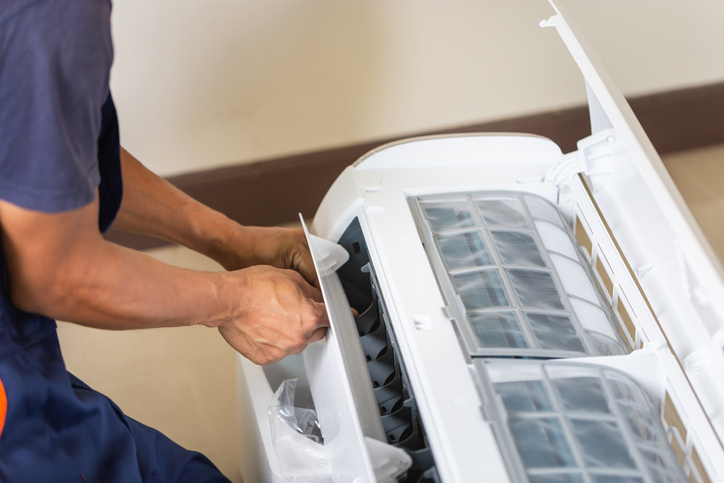Introduction
Air conditioning is a must-have for indoor comfort, but how it’s delivered and maintained can vary dramatically depending on the type of property. While both single-family homes and multi-unit buildings require reliable cooling, the design, installation, and upkeep of their systems are quite different. Professional air conditioning services must be tailored to suit the specific demands of each setting. From zoning systems to ductwork complexity, understanding these differences is crucial for property owners, tenants, and managers alike. Let’s explore how service strategies are customized to meet the unique challenges of these two property types.
Professional Cooling Solutions Built to Fit Your Space
1. System Sizing and Load Requirements
In single-family homes, HVAC sizing typically focuses on a single living space, considering square footage, ceiling height, window count, and insulation levels. This makes it easier to install a system precisely matched to the home’s heating and cooling load. In contrast, multi-unit buildings require careful calculation for shared walls, floor variance, and combined usage demands. These services for multi-family properties often involve custom-engineered solutions to handle multiple units without overloading a central system. Proper load analysis is key to preventing inefficient operation or equipment strain.
2. Installation Complexity
Installing an AC system in a single-family home is often more straightforward, with centralized ductwork and unit placement determined during initial construction or a later remodel. For multi-unit buildings, HVAC installation requires careful planning around shared infrastructure, tenant privacy, and noise control. Additionally, the presence of multiple zones or floors introduces greater complexity in duct routing and equipment access. These services for multi-unit properties often involve rooftop systems, split units for individual apartments, or centralized chillers with individual air handlers.
3. Zoning and Control Systems
Single-family homes benefit from simple zoning systems, typically managed with a single thermostat and possibly smart home integration for multiple rooms. In multi-unit properties, zoning becomes more advanced. Each unit may need independent control for tenant satisfaction, which requires multiple thermostats and independent HVAC access. Property managers often work with services teams to integrate smart zoning systems or variable refrigerant flow (VRF) systems that give individualized climate control. Balancing tenant comfort while managing energy efficiency becomes a top priority.
4. Maintenance Scheduling and Access
Maintenance for single-family homes is relatively easy to schedule and perform, with equipment accessible from the garage, attic, or backyard. For multi-unit buildings, technicians must coordinate with tenants, navigate shared hallways, and follow building access protocols. These services for multi-family residences must include comprehensive scheduling, tenant notification procedures, and after-hours options to minimize disruption. Service providers may also offer contract-based plans for property managers to ensure consistent and routine upkeep.
5. Cost Structures and Billing
In single-family homes, the homeowner is solely responsible for installation, usage, and ongoing maintenance costs. For multi-unit properties, the cost structure varies—some buildings include air conditioning in the rent, while others have individual metering or central billing systems. These services for multi-unit buildings may involve bulk maintenance agreements or service contracts to reduce per-unit costs. Budgeting for these services must consider common area cooling as well as individual unit systems.
6. Customization and Retrofit Options
Homeowners often have more flexibility to choose energy-efficient models, upgrade ductwork, or install smart thermostats. Retrofitting a single-family home is a fairly direct process with minimal coordination. In multi-unit properties, customization is limited by building structure, shared systems, and lease agreements. Technicians providing AC-related services must ensure compliance with building codes and minimize impact on other tenants. Retrofitting older buildings often requires innovative ductless or compact solutions like mini-split systems.
7. Energy Efficiency Considerations
Energy efficiency is a top concern for both property types, but approaches vary. In single-family homes, improvements focus on insulation, upgraded units, and programmable thermostats. Multi-unit buildings may rely on high-efficiency shared systems and energy management platforms to monitor usage across apartments. These services in large buildings often include energy audits and upgrades to meet local building performance standards. Centralized systems also benefit from scale, where improvements can yield savings across dozens of units.
8. Emergency Repairs and Downtime Management
A breakdown in a single-family home affects one family and can usually be addressed on short notice. In a multi-unit setting, an AC failure could impact dozens of tenants, requiring an urgent and coordinated response. These services for larger buildings include emergency repair contracts, backup systems, and rapid-response protocols. Maintaining a service partnership with a trusted provider ensures quick restoration and protects tenant satisfaction.
While the purpose of air conditioning remains the same—keeping indoor environments comfortable—the strategies used in single-family homes versus multi-unit properties are vastly different. Each comes with its own set of technical, logistical, and financial considerations.
Whether you’re a homeowner upgrading your HVAC system or a property manager overseeing dozens of units, choosing the right air conditioning services provider is essential. Tailored expertise ensures your system meets current demands, stays efficient, and avoids unnecessary breakdowns. Understanding these differences allows for smarter planning and better long-term performance.
Conclusion
Call us at Supreme Service Today at (410) 788-1114 for expert air conditioning services tailored to homes and multi-unit buildings across Maryland.
📌Trusted experts near you! Stop by our Supreme Services Center for reliable plumbing, Heating, and HVAC solutions — fast, friendly, and local.





